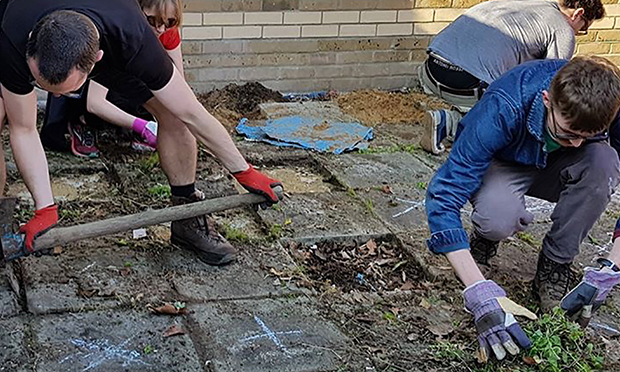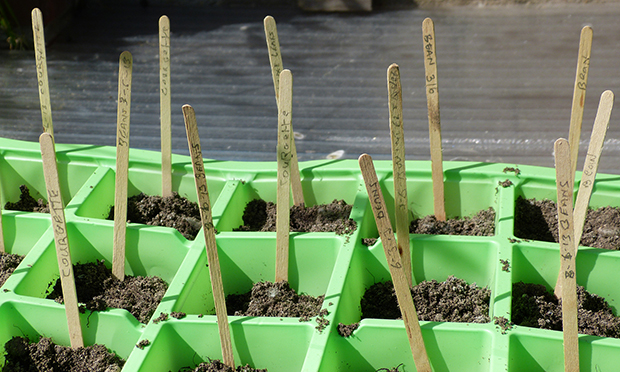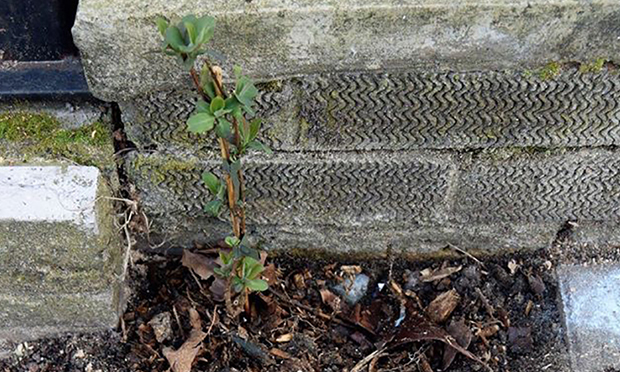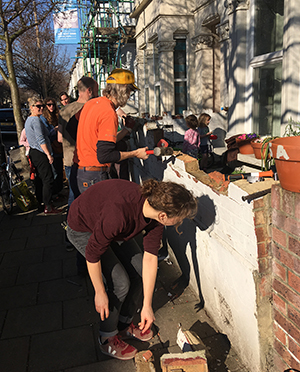The Citizen Gardener: ‘I’ll put up with being labelled a vandal’

Now that the days are getting longer we wake up from our winter slumber and have hopeful thoughts about growing things from seed.
Buying Seeds
Seeds are political (think GM). Seed companies naturally want us to keep buying their seed rather than do what we’ve done for centuries and save our own seed.
This tends to mean that they will produce a limited range of seeds – ones that are perhaps more reliable, disease-resistant or heavy-cropping rather than flavoursome, interesting or easy to save.
As with everything, it seems, there is a decline in the variety of seeds available and a danger of more becoming extinct.
Some packet seeds are F1; that is, bred from different parent plants with particular characteristics. The F stands for filial (child).
Plant breeders might want the productivity of one bean crossed with the height of another.
They take years to develop and if you save seeds from these plants, they are likely to revert to one of the parents rather than be a copy of the child.
So, when buying seed be aware that F1s are often more reliable and heavy-dropping but you lose the power to regrow.

Sowing seeds
Seeds need light, soil and water to grow. Some germinate in the dark; others need a sunny spot (check the packet).
What we often forget is that soil temperature is important in germination.
Some seeds, such as lettuce, need low temperatures to germinate while chillies need a constant 18 degrees over several weeks.
It really does make a difference and if you put seeds in too early they may rot before the temperature is right.
My mother would always lay some horticultural fleece on the soil a few weeks before sowing to warm the soil up.
You can buy heated propagators, too, but I usually just start sowing seeds in my (only) sunny window and once the nights become warm (usually not till April or even May) start moving the seedlings out during the day to get them used to the harsher conditions of the outdoors.

What you don’t want is for the seeds to grow too fast and become etiolated (love that word!).
This happens if they don’t have enough light so grow tall and thin to find it, or if they are too warm.
It’s better for seeds to grow slowly, steadily and sturdily so keep them cool-ish but with lots of light.
Don’t forget to label. It’s easier than you think to forget what you have sown.
Having said all this and probably scared people off, just remember that seeds have spent millennia growing without our help.
For vegetables, have a look at realseeds.co.uk, and for cut flowers, helpful advice and a very funny blog, higgledygarden.com.
Join the Heritage Seed Library at gardenorganic.org.uk/hsl.
Seed banks and seed swaps
I’m hoping to set up a local seed swap and a seed bank in E5 in the next months.
Plants will adapt to the particular local conditions (soil, microclimates, rainfall etc.) in an area so seeds grown locally will do best.
londonfreedomseedbank.wordpress.com
Get in touch if you have space to host it or if you’d like to help.
Nature is Smashing
I’ve been accused recently of vandalism.
I always knew I shouldn’t stick my head above the parapet, let alone knock the parapet down but that’s what we did in our Nature is Smashing event, co-hosted by Daubeney Fields Forever and Friends of the Earth’s 10xGreener project.

We wanted to help people to make small changes in their environment for the environment – drill a hole in a wall for a bee habitat, lift a paving stone or break up some concrete to let plants grow or knock down a wall and replace it with a hedge.
At a time when a lot of us feel powerless, it is heartening that we can do something small to make some space for nature.
And if lots of us do it, we really can make a big difference; by releasing nature from concrete we can give it habitat and if we allow plants to grow, we can provide food for insects and birds.
We shouldn’t have to do this engineering but when insectageddon is predicted, with 40 per cent of the world’s insects forecast to be extinct pretty soon, and when more than a third of front gardens now paved over, we have to do something so I’ll put up with being labelled a vandal.
Tips for smashing concrete:
– Only remove paving or bricks if you have permission!
– Break up concrete with a sledgehammer, not a pickaxe.
– Wear goggles and shoes with hard toes and make sure others keep a safe distance.
– Let your neighbours know if you’re going to make a mess or noise.
– Think about how you’re going to collect and dispose of rubble – there’s a lot of it and it’s heavy.
– Be careful of manholes. pipes and cables that might be under the concrete.
– Decide what you want to plant. If anything (you might just wait and see what appears). That will determine how deep you dig. Wild flowers need poor soil.
– Spread the word!
If you want to organise a similar day in your area, get in touch – and sign up to 10xGreener. We can spread this across the country.
Kate Poland is an award-winning community gardener. She was chosen to be the UK’s first ever postcode gardener in E5 as part of Friends of the Earth’s 10xGreener project. For more information, head to cordwainersgrow.org.uk and friendsoftheearth.uk
Photos and captions courtesy of Kate Poland.
